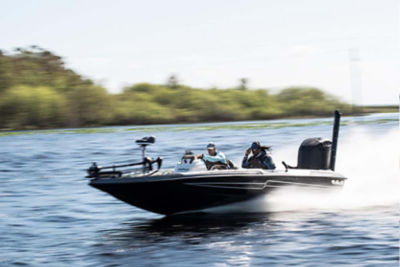How to Choose a Kayak Paddle
To get the most of your time on the water, make sure you have the right paddle with these tips.
When it comes to your essential kayak equipment, you want to find the right fit for you. No matter if it’s your kayak or personal flotation device, having the correct size can improve your time on the water.
Your paddle is no different.
There are a variety of kayak paddles to choose from. You’ll find an assortment of lengths, shafts and blade styles to pick from. Pro Tips is here to help you explore all your options when choosing a kayak paddle.
LENGTH
There are two factors that will help you determine the length of your paddle: the width of the kayak and your height. Generally, you can keep these tips in mind to find a length that is suitable for you:
- Wider kayaks need longer paddles.
- Taller kayakers need longer paddles.
Check out the chart below as a guideline for your paddle fit:
| Kayak Paddle Sizing | ||
| Boat Width | ||
| Less Than 25 in. | ||
| 25 in – 28 in. | ||
| More Than 28 in. | ||
| Kayaker Height | ||
| 5 ft. – 5 ft. 6 in. | ||
| 210 cm. | ||
| 210-220 cm. | ||
| 230 cm. | ||
| 5 ft. 6 in. – 6 ft. | ||
| 220 cm. | ||
| 230 cm. | ||
| 230-240 cm. | ||
| More Than 6 ft. | ||
| 220-230 cm. | ||
| 230-240 cm. | ||
| 240 cm. | ||
Also, remember to keep your stroke angle in mind:
- Kayakers with a higher stroke angle may prefer a slightly shorter paddle.
- Kayakers with a lower stroke angle may prefer a long design.
It’s essential to make sure your blades are easily submerged in the water and don’t strike the kayak.
SHAFT
The material used in the shaft can have an impact on the performance of the paddle.
- Aluminum tends to be a cost-effective option. These shafts are durable and can offer a solid experience. However, aluminum can become hot or cold depending on the weather. If you’re using it in the cold, you may want to wear gloves. If it’s a warm day, make sure to store the paddle in the shade.
- Carbon and fiberglass are both durable and lighter than aluminum. Lightweight shafts can be helpful for paddling for longer durations and distances. These types of shafts are less temperature sensitive.
You may also choose between a straight and bent shaft.
“Most paddles have a straight shaft,” professional kayak instructor Carson Lindsay says. “But there are some paddles that have a bend in the shaft to ease the stress on our wrists. Other paddles actually have different diameters in the shaft based on the sizes of our hands. Typically, smaller hands like a smaller shaft on the paddle.”
Some shafts will have adjustability features to change the length. This can be helpful if different sized kayakers may be using the paddle. You can also switch between feathered or matched:
- A matched paddle has the blades aligned with each other.
- A feathered paddle has the blades on different planes. This can help increase speed and efficiency with less wind resistance.
PADDLE BLADE
The material of the blade will also have an impact on the performance:
- Plastic/Nylon: These tend to be the lowest-priced blades and are typically a good choice for beginners. The material can help prevent it from snapping, but it will also cause flexibility issues when in use.
- Fiberglass: These are lighter than plastic/nylon blades. Fiberglass blades offer strong durability and efficient performance in the water.
- Carbon Fiber: These are the lightest of the blades. They are also very stiff and can help improve energy transfer as you paddle.
The design of the blade can also affect how it performs. You’ll want to decide between narrow and wide blades.
“Typically, a smaller paddle blade is going to make it easier for you to paddle for longer periods of time but not be as powerful as maybe a larger blade where you’re going to have more power, but you might tire more quickly,” Lindsay says.
Another design feature you’ll need to think about is choosing between an asymmetrical and a symmetrical blade:
- Asymmetrical blades have a greater surface area and can lead to a more efficient paddle. The top edge of the blade is longer than the bottom. These tend to be the most common blade shape.
- Symmetrical blades have the same shape on the top and bottom. These tend to be popular with beginners, as it doesn’t matter in which direction you hold them.
You’ll also need to choose between dihedral and spoon blades:
- Dihedral blades have a ridge that runs across the center of the blades. This helps water flow evenly over the surface of the blade for more comfortable paddling.
- Spoon blades scoop water and provide more power. However, they can flutter if you don’t have a strong paddling technique.
Now that you know how to find the right paddle for you, make sure you know which kayak best fits your needs.
Finding the right kayak paddle can help improve your experience on the water. Once you find the proper fit, you’ll be ready for countless paddling adventures on your kayak.








